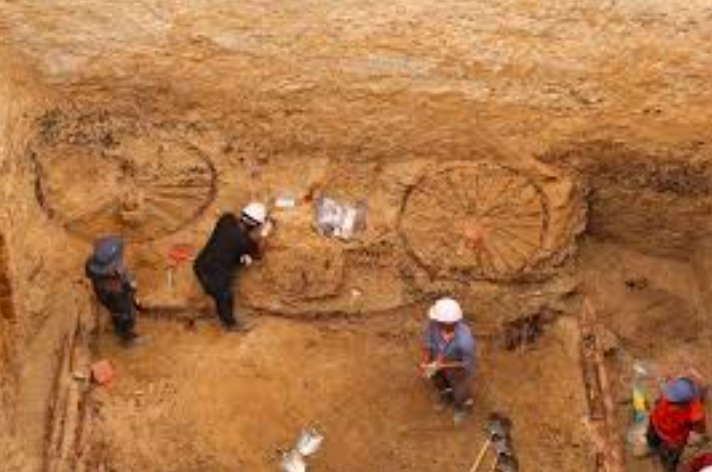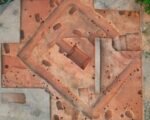In a remarkable archaeological discovery, researchers have uncovered the remains of an elite woman buried within the walls of an ancient fortress in northeastern Mongolia. This burial, dating back to the 12th century, predates the rise of Genghis Khan and offers valuable insights into the period between the collapse of the Kitan Empire and the emergence of the Mongol Empire. The woman, dressed in a yellow silk cloak, was found alongside numerous valuable artifacts, highlighting her high status in society.
Discovery of the Elite Burial
The discovery of the elite woman’s burial was made by accident during a survey of the Khar Nuur fortress. Researchers were initially focused on studying the fortress, which was built between the 10th and 12th centuries during the height of the Kitan-Liao Empire. The fortress was part of a 500-mile long wall that stretched across the countryside. While surveying the site, researchers stumbled upon a tomb hidden within the fortress walls.

The woman’s remains were well-preserved, and radiocarbon dating revealed that she had died between the ages of 40 and 60. She was buried in a coffin, dressed in a yellow silk robe, with additional silk textiles placed under her head. Her skull was covered with a birchbark headdress, further indicating her elite status. Alongside her remains, researchers found golden earrings, coral and glass beads, golden ornamental plaques, a gold bracelet, and various bronze fragments from vessels and framed objects.
Significance of the Burial
The burial of this elite woman provides a unique glimpse into the period between the collapse of the Kitan Empire and the rise of the Mongol Empire. This era, often overshadowed by the later achievements of Genghis Khan, is relatively understudied. The discovery of the woman’s remains and the artifacts buried with her sheds light on the burial practices and social hierarchy of the time.
The Khar Nuur fortress, where the burial was found, was likely seen as a symbol of prestige and power by the local steppe nomads. The woman’s burial within the fortress walls suggests that she belonged to a prestigious lineage with significant political standing. The richness of the grave goods, including the diversity and quantity of artifacts, further supports this notion.
Insights into the Kitan-Liao Empire
The Kitan-Liao Empire, which controlled large portions of central and eastern Mongolia, was known for its complex social structure and advanced trade practices. The discovery of the elite woman’s burial at Khar Nuur provides valuable information about the empire’s burial customs and the status of women in society. The presence of silk textiles and valuable artifacts indicates that the woman held a high position and was likely involved in the empire’s trade networks.
The Kitan-Liao Empire collapsed in 1125, paving the way for the rise of the Mongol Empire under Genghis Khan in 1206. The burial of the elite woman at Khar Nuur offers a rare glimpse into the transitional period between these two empires. It highlights the continuity of certain cultural practices and the importance of maintaining social hierarchies even during times of political upheaval.













